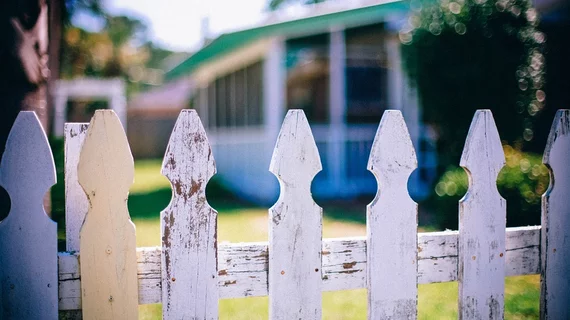Individuals who live in greener neighborhoods might be less likely to develop heart disease and stroke than those residing in areas with fewer parks or green spaces, according to a Journal of the American Heart Association study published Dec. 5.
The idea that green vegetation could have cardioprotective effects isn’t new, lead author Ray Yeager, PhD, and colleagues wrote. A 2008 analysis of U.K. residents found rates of cardiovascular mortality were lower in areas with more vegetation, and another study suggested ischemic stroke patients had better survival rates if they lived in greener areas.
“Extensive evidence supports the notion that cardiovascular disease risk is affected by many features of the built environment, such as residential characteristics and location, proximity to major roadways, availability of healthy food and neighborhood walkability,” Yeager and colleagues at the University of Louisville wrote. “Several recent studies have reported that individuals living in areas of high vegetation display fewer depressive symptoms but greater neighborhood satisfaction, better social interactions and higher social support.”
That reduction in mental stress can go a long way for heart health, the authors said. Green spaces also encourage more physical activity among residents and could shield them from heat, traffic emissions and ambient pollutants.
Yeager et al. recruited 408 individuals for their study, which examined the relationship between neighborhood greenness and biomarkers of cardiovascular injury. The researchers measured CVD criteria through blood and urine tests and estimated greenness from satellite-derived normalized difference vegetation index (NDVI) scores.
After adjusting for residential clustering and demographic, clinical and environmental variables, the authors reported contemporaneous NDVI within 250 meters of participants’ homes was inversely associated with urinary levels of epinephrine (a 6.9 percent difference) and F2-isoprostane (a 9 percent difference). The link between NDVI and urinary epinephrine was strongest in women, those not taking beta-blockers and those who didn’t have a history of MI.
The team also found green spaces were associated with a higher capacity to repair blood vessels and found a solid link between greenness and reduced mental distress.
“Our results suggest that the beneficial effects of greenness may be attributable, at least in part, to a favorable neurohormonal profile associated with diminished oxidative stress, and a pro-angiogenic state,” Yeager and colleagues wrote. “These findings are consistent with the results of previous studies showing that residential greenness is inversely associated with stress, anxiety and mood disorders—a spectrum of mental states that are associated with the activation of the sympathetic nervous system and the hypothalamus-pituitary axis.”
They said their research suggests women and patients without a history of MI would benefit most from living in areas with denser vegetation.
“Persistent exposure to greenness is conducive to cardiovascular health,” the authors said. “Evaluation of exposure to green spaces may be informative in assessing cardiovascular disease risk.”

